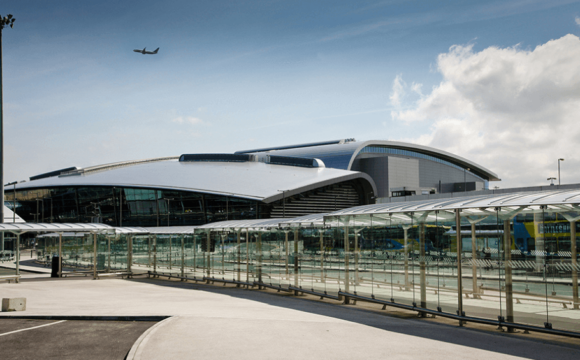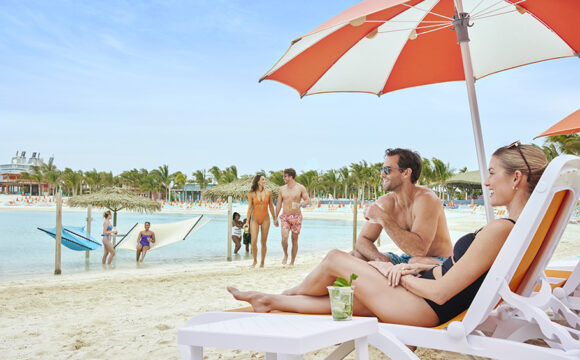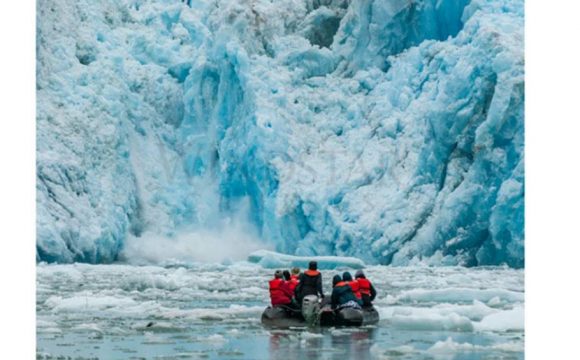CANADA
Nita Lake Lodge, Whistler
Nita Lake Lodge in Whistler is located right on Nita Lake with 77 large rooms all with very comfortable king-sized beds, cosy gas fireplaces, luxurious double soaker bathtubs and glass-enclosed rain head showers. In order to stay at the forefront of sustainability, Nita Lake Lodge hosts an abundance of green practices to help protect the environment by encouraging sustainability in a variety of ways. The hotel grows its herbs and vegetables on an organic rooftop garden using locally sourced ingredients in their dining outlets whenever possible. It uses energy-efficient lighting, a policy of using chemical-free cleaning products, a comprehensive recycling programme and energy-efficient boilers using geothermal energy to heat and cool the property and much more.
USA
1 Hotel West Hollywood is a leader in sustainability
The 1 Hotel West Hollywood pushes the boundaries of sustainability without compromising on luxury. With an Energy Star score of 95, “1 WeHo” is one of the most energy-efficient hotels in LA. Among its property-wide conservation practices is the inclusion of native and adaptive vegetation, a smart irrigation system that determines when soil actually needs water, a 100% organic, sustainably-grown vegetable garden and neighbouring beehives and 100-year old olive trees. Inside the hotel, smart energy-efficient zoning of A/C and fresh air keeps guests comfortable and LED lighting flows throughout the building. Designed by AvroKo and executed by SH Hotels & Resorts’ interior design team, the property’s conscious earthy design is inspired by the beauty and simplicity of raw materials: reclaimed timber and steel, recycled fiber carpeting, abundant native greenery and stunning stonework. The reception desk is crafted from lumber, sourced from naturally fallen trees and all lobby furniture is locally made by J. Alexander.
Taste the farm-to-fork food in Sacramento, California
Known as America’s farm-to-fork capital, Sacramento sits among 1.5 million acres of farms and ranches that grow more than 160 crops for markets all around the world, including 96% of the country’s tomatoes from within 250 miles of Sacramento. The city’s restaurants make the most of this vast farmland to create fresh meals with a low carbon footprint. Visitors can join the Local Roots Food Tour to sample some of the finest menus in town whilst learning about the rich history and architecture of the city. The tour company’s Midtown Arts walking food tour will take travellers through Midtown Sacramento, past intriguing murals and into venues using farm-to-fork ingredients and farm-to-grass libations, for a taste of true Sacramento.
Eco-friendly California Pacific Excursions, Yosemite Mariposa County
For those travelling around California coming from San Francisco or Los Angeles without a personal vehicle should consider the eco-friendly option by AMTRAK and YARTS bus arranged by California Pacific Excursions. California Pacific Excursions offer year-round tours that are available for one, two, or three-day tours bringing travellers from San Francisco and Los Angeles to one of several comfortable lodging properties between Mariposa and Yosemite. Once in Yosemite, a free shuttle service runs all-day to take travellers to some of the most popular sites and trailheads.
Denver: 4th most sustainable destination in the world
This year, Colorado’s state capital – Denver – was recognised by National Geographicas the fourth most sustainable destination in the world. The Mile High City has a number of initiatives in place which enabled it to earn this accolade including its Certifiably Green Denver programme, where free, customised sustainability plans are offered to Denver businesses to help them operate in a greener way. Other commitments include the introduction of 125 miles of bike lanes by 2023 and ‘planting’ of solar gardens on vacant land throughout the city, helping the city towards its goal of achieving 100 percent renewable electricity by 2023. Travellers to the city can enjoy ample parks and green spaces, sustainable restaurants and visits to green attractions, such as Denver Museum of Nature and Science. www.colorado.com
Sustainability at the world-famous San Diego Zoo
This year, San Diego Zoo welcomed two new wildlife experiences; the Kenneth C. Griffin Komodo Kingdom and the William E. Cole Family Hummingbird Habitat, two brand new exhibits allowing guests to interact with some of the most powerful and delicate species on earth. The exhibits were carefully designed to create natural habitats for the komodo dragons and hummingbirds but also from an eco-friendly standpoint. Features include visitor benches made from recycled plastic and hummingbird ponds using recycled water. Both exhibits were also made using materials that are Forest Stewardship Council-certified, have low levels of embodied energy and can be recycled at the end of their lifespan. www.sandiego.org
Pittsburgh pledges to reduce transportation related emission by 50% by 2030
In 2020, the city of Pittsburgh announced the Pittsburgh Bike(+) pledge; a 10-year initiative aiming to give residents and visitors a more affordable transport network, with 120 miles of planned improvements including bike lanes, trails and low-traffic streets called “neighbourways”. Pittsburgh already has an underground light rail network in place, called the T, which is free to ride downtown. And, in terms of green spaces, the city currently has 165 parks, 24 miles of riverfront trails and in close proximity to Butler County (home to Moraine State Park and Lake Arthur) and the Laurel Highlands. www.visitpittsburgh.com
Make your stay more energy-efficient and locally sourced in Greater Palm Springs
From the nation’s first carbon neutral resort to local attractions that care for the earth, Greater Palm Springs offers plenty of options to travel more sustainably. Two Bunch Palms located in Palm Desert is 100% carbon-neutral resort with hot springs that taps into a 547-kilowatt solar photovoltaic (PV) installation on its grounds to provide enough renewable energy to offset 100% of the resort’s electric power consumption. It’s the first resort in the nation to do so.
Aspen Snowmass, one of the world’s leading sustainable travel companies, celebrates 75th anniversary
Not only is Aspen Snowmass one of the world’s best ski resorts, but it’s also one of the world’s leading sustainable travel companies. Aspen Snowmass is committed to protecting the environment and leading the way on corporate responsibility and sustainability. The resort celebrates 75 years of skiing and riding this winter season. This historic milestone will celebrate the heritage and history of skiing in Aspen and will highlight how innovation in ski racing, sustainability, athletic achievement, inclusion, art and other areas have led to future possibilities in each of these areas.
Every year the Aspen Center for Environmental Studies educates 6,400 youth about climate science, creating a new force of committed, ecologically literate activists. Additionally the City of Aspen and Aspen Skiing Company have set aggressive goals to reduce emissions, and now run their electric utility on 100% renewable power. Aspen Skiing Company has also been an avid supporter of the Protect Our Winters campaign and has helped create a movement to lobby US Congress to take action on climate change. Aspen Ski Company has also converted a coal mine in Somerset, Colorado into a clean-energy production facility. Since this clean-energy project started, it has prevented the emission of 250 billion cubic feet of methane annually into the atmosphere, which is the equivalent to removing 517,000 passenger vehicles from the road for a year.
Leaving a positive impact in Mammoth Lakes
The epic mountain town of Mammoth Lakes, and the surrounding Eastern Sierra, is an otherworldly adventureland that lets visitors connect with nature through camping in the wilderness, hiking the mountain trails or getting out on water. Visit Mammoth has resources to help visitors to this special part of California become a better steward to the mountains, lakes and forests, and even help them learn about proper recreation practices while at camp or in town so they can travel responsibly. The team at Mammoth Lakes like to think of it like giving Mother Nature a big hug. They have created a set of guidelines to help visitors understand how to respect nature and animals, clear up after themselves and leave a positive impact on the local community.
California Academy of Science in San Francisco
It might be known as the tech capital of the world, but San Francisco is also one of the world’s leading eco-friendly cities to visit as a tourist. The city offers more green-certified hotels, vegan or organic restaurants, environmentally-friendly tours and nature attractions than anywhere else in the US. The California Academy of Sciences, one of the city’s leading attractions, is a masterpiece of sustainable architecture, blending seamlessly into its setting while employing a wide variety of innovative features and operations to minimise its footprint. The facility earned the U.S. Green Building Council’s highest ratings for its eco-friendly design and operations, making the Academy the world’s first Double Platinum museum—and the largest Double Platinum building in the world.
THE ISLANDS OF TAHITI
Eco-museum Fare Nature opens in The Islands of Tahiti
Located at the Opunohu bay, Moorea, the Fare Natura showcases Polynesian culture and biodiversity based on scientific work concerning biology, geology, anthropology and ecology. Born in 2012 from the CRIOBE researchers and supported by French Polynesia’s government, the Fare Natura has as a goal to popularise and transmit to the public scientific and cultural knowledge on the Polynesian natural environment. The aim of the eco-museum is to educate visitors about the environment, derived from science and culture, in order to “understand, preserve and transmit”. The museum hosts a number of permanent and temporary exhibitions for visitors to enjoy.
Open: Wednesday – Sunday – 08:30 – 16:00
Price: £15 per person
JAPAN
Michinoku Coastal Trail
Running along the coast of the Tohoku region is the Michinoku Coastal Trail, this trail offers a rocky shoreline, numerous bays, cliffs and coves stretching over 1,000 kilometres. As a result of the 2011 earthquake and tsunami disaster tourism has been and still is vital to the recovery of the area. The region was devastated by the impact and after effect of the tsunami and currently only gets visits from 2-3% of Japan’s international travellers despite it being one of the biggest areas in Japan. The local community has worked hard to rebuild the area using tourism to help generate the local economy. Visitors can hike the Michinoku Trail and stay in guesthouses along the way, this allows for visitors to experience local life for themselves, and see what’s so special about the Tohoku region. Visitors can walk the length of or part of the Michinoku Coastal Trail with Walk Japan, Walk Japan is a company that prides itself on its efforts to incorporate local communities into its walking tours. It is committed to employing local staff, they use local family-run accommodations, local taxi and bus firms, restaurants and more.
Hoshinoya Karuizawa – Nagano, Japan
Located in the Nagano prefecture, along the Three-Star Road in the Japan Alps, stands the serene eco-friendly mountainside Hoshinoya Karuizawa resort. This gorgeous resort is just a short drive from Tokyo blending into rural surrounding landscapes. The resort gets its name from the use of hydroelectric systems created from waters that trickle-down Mount Asama to the Yukawa River. In line with using natural waters for power the resort is home to natural hot springs that are powered by geothermal energy from Mount Asama. The system in place is called ‘Energy In My Yard’ providing 70% of the resort’s energies including the added luxury of under floor heating. Enjoy the surrounding wonders of this resort guilt free and view the Shiraito Falls, Karuizawa Wild Bird Sanctuary and Tombo-no-yu baths. Stroll around the resort’s private idyllic gardens taking in the peaceful and spiritual atmosphere.
Kamikatsu zero-waste village, shikoku
Japanese town Kamikatsu is located in Tokushima prefecture in the Setouchi Region. In 2003 the town took to a Zero Waste Policy, the first in Japan to do so, and aimed to eliminate the use of incinerators or landfills. Residents of this town have spent over two decades reusing, recycling and reducing. The town has no trash collection system so residents transport the household waste themselves to a local facility, where there are over 45 separate categories for their waste segregation. Back in 2016 the town managed to recycle 81% of all their refuse and with their sights set on 100% ‘Zero Waste’ by the end of 2020. In 2020, the town opened the ‘Why?’ facility to encourage people to visit and learn about the town’s ground-breaking sustainability initiative. The new facility includes hotel rooms for overnight guests, and is in the shape of a question mark. The town also boasts a designer bar made entirely from recycled refuse.
Travelling by train around Japan
Japan is renowned for its excellent train transportation being exceptionally clean, quick and easy to use. Cut down on carbon footprint and take an unforgettable trip around Japan. Trains stop at both major cities’ and smaller villages allowing for visitors to get off-the-beaten-track and to discover many of the hidden gems that the country has to offer.
Many areas in Japan have their own special, scenic railways on which visitors can take in the natural beauty and essence of the region. Travel to the lesser-known areas of the Tohoku region via the Gono Line and stop off in Hachinohe City where the Kabushima Shrine stands. From here visitors can get the train down to Tokyo and explore the capital before venturing from Shibuya to the Chubu region where visitors can explore the Three-Star Road area. From Shibuya the Three-star route will travel to Matsumoto, Takayama in Gifu Prefecture, Shirakawa-go, Gokayama and end up in Kanazawa, Ishikawa Prefecture. This is an unforgettable area to explore, offering plenty of charming places that showcase a real Japan along with World Heritage sites and National Treasures such as the Kenrokuen Garden, Ishikawa. From here visitors can continue all the way down to west Japan to Kyushu travelling from Kanazawa to Fukuoka. Here, visitors can purchase JR Kyushu rail pass, this area pass covers travel on the Kyushu shinkansen between Hakata, in Fukuoka, and Kagoshima, via Kumamoto, as well as limited express trains around the island, including routes to Nagasaki and the onsen towns of Beppu, Yufuin and Ibusuki.
EUROPE
Visitors to Slovenia encouraged to explore on two wheels
Slovenia has long been recognised as a leading eco-friendly destination; its ‘Green&Safe’ accolade highlights its dedication to responsible tourism, high levels of hygiene and ongoing, proactive commitment to acting responsibly, safely and sustainably. This year, a new Juliana Loop Biking trail launched, offering cyclists the chance to enjoy the beautiful Julian Alps mountain range on two wheels. The 290-kilometre trail connects villages, towns and valleys, with an emphasis on hidden experiences and encounters that give back to the local communities. Furthermore, the country has also welcomed Hotel Bohinj, Located in the heart of Julian Alps is Slovenia’s premier eco-friendly hotel, the Bohinj ECO. The luxurious ECO has earned a reputation as one of the best hotels in the region. It’s also one of the most advanced and energy efficient hotels in central Europe – for which it has won plenty of awards. This hotel is a great choice for a relaxing holiday in this beautiful region, on the edge of the Triglav National Park and only a few kilometres from Lake Bohinj.
València becomes first city in world to measure water footprint of tourist activity
A new study, carried out by the Global Omnium company in collaboration with the Visit València Foundation and València City Council, shows the impact of human actions on water resources, calculating the consumption and pollution of freshwater that is derived, directly or indirectly, from the different components of tourist activity, from transport and accommodation to consumption in restaurants and leisure venues. The initiative is part of Valencia’s Sustainable Tourism Strategy to make the city a carbon-neutral destination by 2025. Similarly, València aims to implement a neutral water footprint through more efficient management. Calculating the water footprint is the first step in identifying opportunities for reducing water consumption and implementing the necessary measures for a more sustainable management of this resource. This will not only generate savings for the local economy, but will also contribute to the conservation of natural ecosystems, and visitors will be able to enjoy themselves in a sustainable, safe, and healthy destination.
















